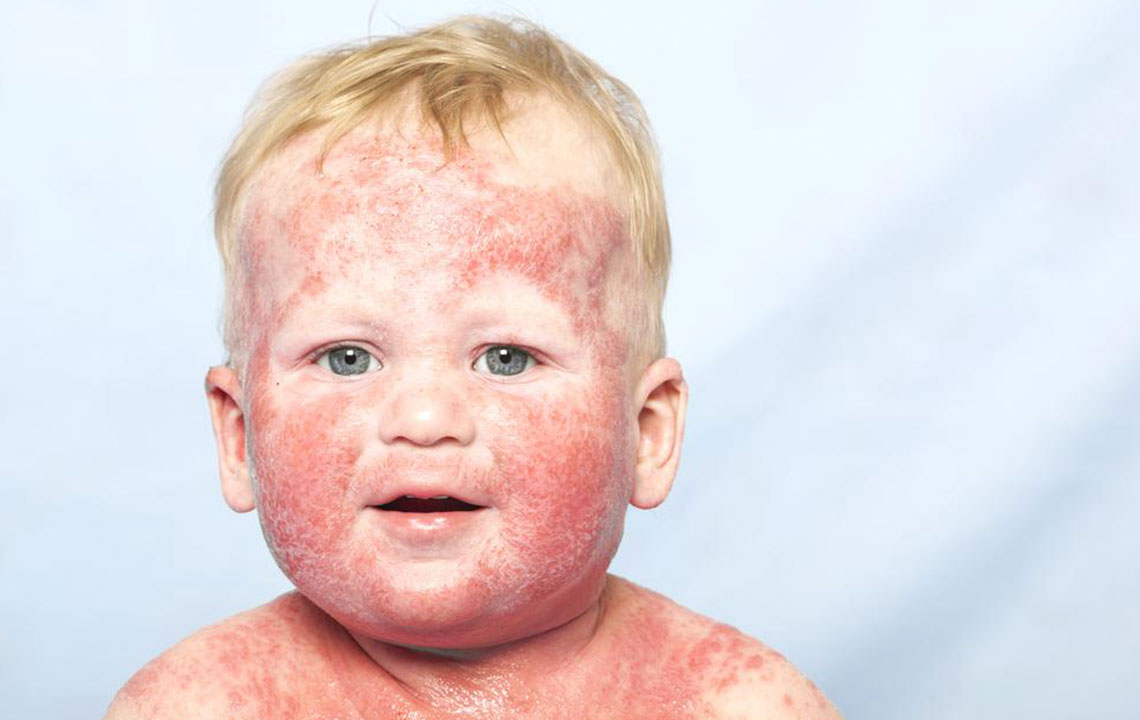7 natural and effective atopic dermatitis treatments
Commonly observed among babies and young children, atopic dermatitis or atopic eczema is a kind of skin inflammation. The cause of this condition is not known. However, it has been observed that a weak immune system, genetics, exposure to harsh environmental conditions may lead to this disease of the skin. Although it affects mostly children, atopic dermatitis can affect adults as well; people living in cities and in places with dry climate are more susceptible.

Those affected by atopic dermatitis find that their skin is unable to hold moisture. This leads to irritated dry skin prone to itching. This aggravates the condition, leading to a vicious cycle of never-ending flare-ups. The itching and scratching cause rashes to develop on the skin. The rash may initially develop into sore filled with fluid that oozes on scathing, or the sores may also develop into crust. Sometimes, the rashes turn dry and red and appear scaly. Constant scratching may lead to lichenification; the affected areas become thick and tough. The areas usually affected are behind the knees, inside the elbows and the neck, scalp, and face. In infants, rashes may appear in the diaper area. However, this is very rare.
It is necessary to consult a dermatologist to control the symptoms and undergo an atopic dermatitis treatment as early as possible. Along with the doctor-prescribed atopic dermatitis treatment, the following natural atopic dermatitis treatments can also be followed at home to get a relief from irritation of the skin.
- Apply calamine lotion : Made of zinc oxide, calamine lotion is widely used as an a topic dermatitis treatment. It is also used to treat many skin diseases. Its soothing properties help to give relief from itchiness and irritation of the skin. A very thin layer of the lotion should be applied to the affected areas so that skin pores are not blocked. The application of calamine lotion may leave a pinkish tint on the skin. This is the color residue of the lotion. Calamine lotion can be applied at least twice a day.
- Avoid itching and scratching : Itching is the most annoying aspect of atopic dermatitis. It not only aggravates the skin irritation but also worsens the skin condition. Scratching the affected areas causes rashes, which further leads to itching sensation due to dryness of skin. It is quite difficult to break out of the scratch-itch cycle. One way is to trim fingernails and file them so that they are not sharp. Instead of scratching, press the itchy areas. It has been observed that itching sensation increases during the night. Mitten or gloves can be worn to prevent fingernails in coming in contact with the itchy skin, and thus avoid further skin irritation.
- Have a soothing bath : Atopic dermatitis causes dehydration of the skin. It is recommended to have a warm soothing bath before bed. Baking soda or uncooked oatmeal can be sprinkled in the bathwater. Magnesium-rich Dead Sea salt or colloidal oatmeal that is specially made for bathing can also be used. Soak in this warm soothing bath for 10 to 15 minutes. Apply any healing moisturizer or calamine lotion to the skin while it is still damp.
- Be wary of new clothes : Clothes fresh off the shopping mall racks may contain formaldehyde, caustic soda and other chemicals. These are used during the finishing process of manufacturing. These chemicals can aggravate atopic dermatitis condition. Wash any new clothes before wearing them. Rinse them at least twice to get rid of any residual detergent as well. Also, be careful about the material of clothes that you buy. Avoid anything that might cause skin irritation. Buy clothes that are made of breathable material that is natural and easily absorbs sweat.
- Use soothing oils for your skin : To avoid your skin from drying you can apply soothing oils to the affected areas. Use light oils and avid the ones that have an overly greasy consistency. Oils such as evening primrose oil, blackcurrant seed oil, and borage oil have been observed to be quite effective in soothing itchy skin. Apply one of these oils in a thin layer. However, if the irritation does not subside, wash the oil off with a wet clean cloth.
- Watch what you eat : One of the best natural atopic dermatitis treatments is taking care of the diet. Diet should be rich in probiotics, omega-3 fatty acids, vitamin D, vitamin E and vitamin B-12. Green leafy vegetables, freshwater fish, nuts, seeds, yogurt, and so on should be a regular part of the daily meals for those suffering from atopic dermatitis.
- Protect your skin : Those affected by atopic dermatitis should avoid the use of chemical on the skin. Deodorants, perfumes, hair treatment products, makeup, soaps, and shampoos that contain harsh chemical should be avoided. Anything that has the potential to cause skin dehydration should be avoided. The skin should also be protected against sun rays that can cause the skin to dry out and itch. A good mild sunscreen should be used. It is recommended to wear long-sleeved clothes made of natural material.